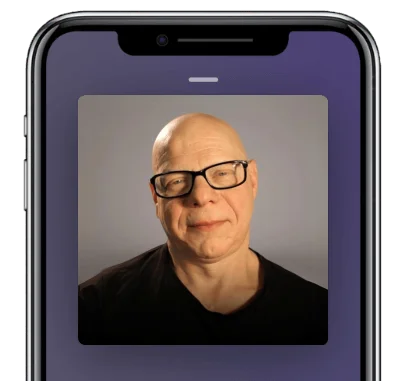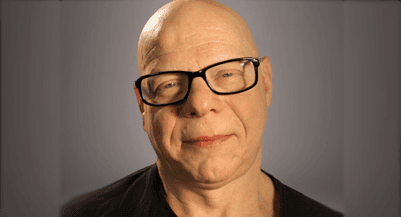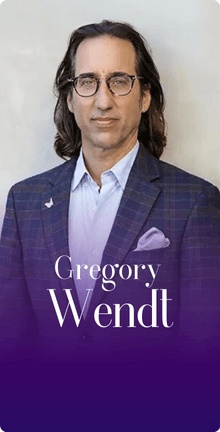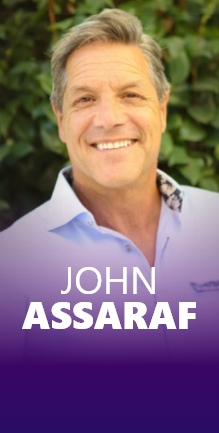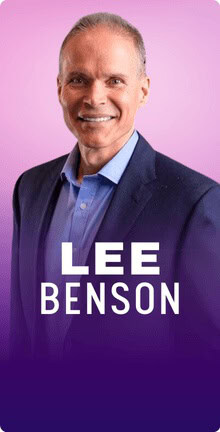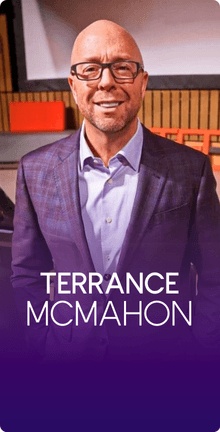It’s lovely to be here, Stephan.
We had a wonderful conversation on Marketing Speak on my other podcast. We decided when we were doing that interview that we’d have to have you on this show talking about things not related to marketing and Facebook. Let’s talk about how things started for you with your agency. You were an early pioneer in internet marketing, but you were working for somebody else. You beat cancer and then you started an agency. I want our readers to grok the magnitude of what you went through and what you created rising out of the ashes.
I had an interesting 25-year career as a road musician. I’m playing in cover bands in the North Dakota Prairie. I played that into Minneapolis in the ‘80s when the whole Purple Rain thing was happening. I moved into advertising music which pivoted into various entrepreneurial endeavors. As all that jelled and I was making the transition to being a marketer from a musician, I was diagnosed with Stage 3B Lymphoma. I drove up and down the freeway listening to Jim Collins’ Good to Great, thinking about being great. I always had a stadium mindset. I’m the guy where if I write in a Word document, I hear the orchestra playing at the end. I drove up and down the freeway on Highway 35 from Rochester, Minnesota to Duluth and back. My employer, who is a small college in Minneapolis, a Minneapolis Music Recording College said, “You don’t have to come anymore, but please would you do our AdWords until you die?” That’s what they meant. They wanted to make sure. We had done some unbelievable things. I had pivoted all the way from music to marketing in music school.
I survived cancer. I wrote the business plan literally in the chemo pot at Mayo. Once you have cancer, nobody can mess with you anymore. My employer became my first client, and then various small clients and hundreds of dollars a month. I made six pages working with a cool team at a health insurance company that sold $125 million in catastrophic health insurance in seven weeks. From there, it grew. I was sick for a while after I was sick, even though I was better. I wrote a business plan and in January 1, 2007, I went to work. In the fourth year we made Inc. 500. We’ve been Inc. 5000 six times in a row. We’re the 2X Best Large Integrated Agency at the US Search Awards and we’ve won ten. The company was born on the mentality of a journeyman that survived cancer. It is said that you get a massive lift from cancer recovery and I can vouch for that with gratitude.
A massive lift in blessings? In fulfillment? What happens?

Energy and vision. I could see it. I knew that I could do this thing. Jim Collins asked his readers to look for the intersection of what you’re talented at, could be the best in the world at or one of the best in the world. Something you’re fanatically driven to do, passionate about, money and profitability. I knew that I had a weird sense of humor about identifying audiences by what they searched for. I felt I could move a car with my own hands. I went from my friends having to carry me through the portage in the Boundary Waters because I was sick, even though I was better, to believing. I set a goal of being one of the top 100 firms of its type in the world. We would make that list with humility about it. I’ve had a vision that turned into reality a bunch of times in my life. The most galvanized I ever was, was after I almost died.
Tell me what the timeline looked like as far as when you first found out that you had a cancer, when you found out that you were cancer-free, when you started your agency. We met at an SMX Advanced. Quickly explain that timeline here.
When I met you, it must have been 2008 or possibly 2009. I was diagnosed with cancer in August of 2005. It took me a year to get better until June of 2006, seven months of chemo, and five weeks of radiation. I had been working on the business plan. I went to SES Chicago 2006, then I started Aimclear blog and went to work on January 1, 2007. I covered conferences with teams of people like journalists until 2008 where I made it my goal to speak at one mainstream conference and write one article for a major trade pub. I wrote a dozen articles for Search Engine Watch that year. Spoke in Portland at SearchFest. I won Danny’s Give It Up Contest. That’s when I met you was on the podium there when Danny said, “You’ve got 120 slides, Marty. You have eight minutes.”
I remember that vividly. That was the most number of slides I had ever heard someone try and present in a panel slot. The entire panel was within an hour. You had eight minutes. You pulled it off.
Thank you, Stephan. You were and remain one of the brightest sparks in the marketing industry. You blew my mind then and you blow my mind now. My friendship with you is based on a begrudging and generous mutual respect. You’re an awesome marketer.
Thank you so much. I think highly of you as well. You’re unique and such a visionary. You’re a powerhouse. You have so much energy and it’s inspirational. I’m glad that we get to share some of your journey here and some of the lessons that you learned. You went to hell and back. You came out the end of the tunnel and some people don’t.
It wasn’t just cancer. It was the part of me that probably caused the cancer, which was lifelong mental health issues dating back all the way to childhood. What I’ve needed to do to overcome that and the way that I’ve needed to integrate that into being a partner, a business person, a father, a personality and make money, etc.
Why don’t we start talking about how it wasn’t easy for you? If you’re willing to dredge up some of that, that would be helpful.
What the therapeutic community and various guidelines call a disorder, narcissistic, antisocial, manic depressive, borderline personality disorder, etc., personality disorders are not curable according to today’s science. There’s some data that says people who come out of their early childhood with the seeds for a lifelong, incurable disorder meet two criteria. The first one is the emotional people. It’s proven that if you take a human and hook them up to 70 sensors like the kind Mayo Clinic would have in a sleep clinic where they’re measuring your eyelid fluctuations and put them in front of a standardized video that has an emotional event, a percentage of the population will light up faster. They’ll get more elevated physically. They’ll plateau higher, sustain it for longer, and calm down slower. These are the emotional people. They’re the ones you associate oftentimes with artistry and other characteristics.
There’s some data that shows that if you’re an emo person, you have a super healthy childhood and are supported, that you become caregivers. There is also a data that says if you’re subject to chronic invalidation in your most early formative years, that’s what forms our disorders. Chronic invalidation happens on subtle levels and on gross levels too. Sexual abuse is one of the most intensive, chronically invalidating things that can happen. Physical abuse, boundary violations, I don’t need to list off the chronic invalidation that I was subject to as a child. I don’t need to do it because such things are relative for each person. I’m an emotional person that was subject to chronic invalidation when I was a kid.
Suffering is pain without acceptance. Share on XMy parents are completely amazing. Our house was a circus. I was born when my parents were young. I love them, they love me and I’m good with all that. They were both living. It was an interesting trip. The way that came out in my behavior as I grew was destructive. I’ve presented with various combinations of some of the disorders that I’ve said and the result is suffering. I’ve learned since that suffering is pain without acceptance. Over the years in my life, I’ve always made my way even with some success. I suffered a lot too. I would lay on the floor for two weeks and weep or intensive racing thoughts where I had to reboot each time. There were three to five episodes like that of various intensities in my life. It made it pretty hard to maintain relationships. It splayed my values. I’ve tried various things, mess with mental health. I’ve known that I had mental health issues for almost my whole life. Over the past years, I’ve become good with that and learn to take amazing care of myself. Now, I’m a joy machine. There’s little suffering. Stephan, I hardly suffer at all. It’s amazing. I can’t believe it.
You know the expression, “Pain is inevitable. Suffering is optional.” I believe that. I had Byron Katie on the show; one of my favorites of all guests and she’s such a world changer. She thinks that suffering is optional. The process that she created, she calls it The Work, is the way out of suffering. A way to turn off or evaporate the suffering you’re in. The four questions, which are, “Is it true? Can I know with absolute certainty that it’s true? How does this thought make me feel? What would life be like if this thought didn’t exist?”
The difference between thoughts, feelings, and judgments. Checking the facts, that’s a common thing. The first thing to do is to check the facts. Does what I’m feeling fit what is going on here? Feeling the right emotion, but too much of it is the same as feeling the wrong emotion. If your behavior doesn’t fit the facts, then you do the opposite to emotion, action all in. If it does fit the facts, then you problem solve from there. Have you ever noticed that when your mind loops out, it’s almost always about difficult emotions? How often does your mind completely loop out over amazing things? Now it does finally. In the past, most people when they ruminate, they’re ruminating on stuff that’s in the past or future that’s a difficult emotion.
I’ve also had Dr. Daniel Amen on the show. He’s one of the top brain experts out there. He wrote Change Your Brain, Change Your Life. He talks about this diamond pattern that many of us have where you do get stuck in this loop. It’s usually on something that you can’t solve. It’s outside of your control. It doesn’t serve you to keep ruminating on it and keep playing it over and over again. That’s called a diamond pattern. If you want to down-regulate that diamond pattern, there are ways to do that naturally. You can use drugs. You could also take some natural supplements, one is to boost GABA. You can change your brain. I love what Dr. Amen says, “It’s crazy to think that the only doctors out there who don’t check the organ that they treat are the psychiatrists. They don’t view the organ that they treat. They won’t look at imaging. They’ll talk to you and then prescribe some medicine.”
You can rewire your brain. If you wired me up with the Mayo Clinic’s sleep clinic and then subject me to standardized video, that I have rewired my brain. I’m aware of thoughts as they enter my mind and my body. I know that thoughts can cause emotions. Thoughts can be based on judgments. I know that every emotion has a physical reaction, but not every physical thing is caused by an emotion. I wanted to tell the story of Marsha Linehan, who is the founder of DBT, dialectical behavior therapy. It’s a mainstream treatment that originally was created for borderline personality disorder. It’s been adapted for other disorders or even strict DBT. DBT is a two-and-a-half-hour skills group each week where nobody’s talking about the specifics of what’s happening and they’re working on target behaviors.

I’m not a person who’s of danger to myself. DBT was originally created to help people that might hurt themselves otherwise. A once a week thing with a DBT therapist. Marsha Linehan tells this story where a person who has chronic pain, debilitating, and difficult pain to where it’s tough to be in each moment is with the master therapist. The person with chronic pain is all freaked out because they’re going to have to visit their kid and that means getting into a car and all the stuff. They’re compounding the future pain on top of the current pain. The therapist says, “You’re guaranteed to suffer now because you have this thing that we’re working to deal with. You can predict that you’re going to have the baseline and it’s going to be worse tomorrow.
You actualizing your fear of tomorrow means instead of handling your shit now, you’re dealing with 2.5 or 2X. For you, chronic pain means accepting that I’m going to be better off if I deal with this right now. That’s an extreme example of how living in the moment reduces suffering. When you have feelings of suffering, ask yourself, “Is this from the future, the past or the current? Does it fit the facts?”
You’ve gotten a great impact out of DBT. Have you also played around with CBT, Cognitive Behavioral Therapy?
Yes, and I’ve studied it. I’ve had therapists that believed in that model over the years. DBT is related to it. DBT is outcome-based, cognitive therapy is more of an eastern model. Tell me from the inside about cognitive, please.
I’ve tried different kinds of therapy. I’m an experimenter, I’m a biohacker. If somebody says CBT or EMDR is worth trying or neurofeedback. I even had the SPECT scan. I went to Amen Clinics and I had the full workup. I did a qEEG. I did the SPECT scan. It allowed them to see my brain through a SPECT scan so they could see the activity in my brain. It’s different from an MRI, which is all about the structure of the brain. It was pretty fascinating to have the doctors there walk me through the results and not an inexpensive test. When I experienced CBT through being guided through it by an expert, I found it quite helpful. What happens is that normally you have an activating event and then you have some belief. A is for activating event plus B is for belief equals C, which is some conclusion that you come to or some consequence. There’s no room for anything else when we’re on autopilot. If you use CBT and you say, “That experience where somebody cut me off on the freeway and I lost it. I almost ran him off the road in response, because of my reactivity,” Let’s re-experience that again, A plus B plus C equals D or something like that. I forgot the exact equation.
The idea is that when you insert into the first part of the equation where the activating event is the trigger, the stimulus, plus your belief, a reevaluation of that, like what we were talking about before with Katie’s work, where you question your thoughts, “Are they even true?” Another part of that that’s critical of questioning your thoughts is to run opposite or multiple opposites of your thought through the same four questions. If your thought is, “Does that person even like me? I don’t think they like me. I don’t think that person likes me.” The opposite of that is called the turnaround. The opposite of it is, “I don’t like that person.” Is that more true? How does that thought make me feel? What would the world and the universe be like if that thought didn’t exist? You take another opposite like, “This person likes me,” and you run that through the four questions. It’s a powerful process. With CBT, you’re reevaluating and then re-experiencing that event. You leave yourself to space to do it differently next time where you don’t just say A plus B equals whatever. There’s like, “I’m going to make a decision to leave that space in there or to pause and do something different,” and think there’s something behind the scenes here that I’m not privy to. Maybe that person is a bad driver, they just got their license, or a friend of theirs just died. I don’t know what happened there that they cut me off on the freeway. Maybe it’s not me. Maybe they aren’t just being aggressive. It’s powerful.
Our values system is about correcting myths to align with reality, that we could accept reality so that we could suffer less. Share on XI’m all the way zoomed out on that is the willingness to explore alternatives and try them on for size. Challenging myths also. Sometimes we come out of unhealthy backgrounds having actualized a number of myths. If I love someone with my true self, I will be injured. If you base your behavior on the myth that you have acquired over the years, that’s not effective. The challenge to that myth is I love prudently, advised by data to minimize the chance of being hurt in love. I’ve done a lot of work with myths where I look at a lot of standard myths and figured out what my challenge is. Our values system is about correcting myths to align with reality, that we could accept reality so that we could suffer less.
The goal here is increased happiness and reduced suffering. Greater control of my own mind. I do that by being mindful, doing one thing at a time as much of the time as I can. I’m less inclined to listen to the radio when I drive and rather work on driving really well so that I stay safe. Interpersonal effectiveness techniques like validating, as the great, societal counterbalance to all the invalidation that occurs. A hundred other techniques that are about being effective. When the inevitable, difficult emotions come because that’s not if, it’s when, there’s going to be hard stuff. It’s the human existence and it’s beautiful. It’s the way it’s supposed to be. When those inevitable, difficult emotions come, having techniques in place, check the facts. Make sure my emotions fit the facts.
Sometimes I ask for a barometer. After emotional regulation comes distress tolerance. That’s where I’m out of control. If I say another thing to someone that I’m going to do damage to the relationship or that exists. That’s when I get ice water and put my face in ice water. I have a distress tolerance toolkit. That’s when I’m allowed to not care about portion control once. Think about distress tolerance is that you find what you need to survive that moment, however, that means to you with survival meaning different things to different people. You need to go back to emotional regulation after that. One of the greatest distress tolerance things that you could do is stop. One of the greatest invalidating things you can do is if somebody says, “We need to stop this now to keep going,” so ironic. The greatest distress tolerance thing we can do is to say, “Stop.” There’s little in this world that requires springing into action to complete things now.
I remember this thing I learned at one of the Neil Strauss intensives. I’ve been in his Secret Society for many years. He had an expert come in to talk about Nonviolent Communication, NVC. I had not heard of it before. It was a real eye-opener. It’s powerful. One of the most violent words in human communication is, should. It’s forcing your own agenda and your own beliefs on somebody else without regard of what theirs are, their priorities, and their feelings. It’s a violent word. I learned all these different approaches to stay in nonviolent communication. Also, you talked about validating and how important that is. I also learned about that from Imago Therapy. Incidentally, I had the founder of Imago Therapy, Harville Hendrix on this podcast. He’s one of the top marriage and couples therapist in the world. He’s created a whole movement. Imago Therapy is all over the world. I was aware of that many years ago when I was in my first marriage. We went to Imago therapists to get some help to try and preserve our marriage. It was helpful.
Our marriage was not meant to survive. It was a gift, but it ended when it ended. It did help us in those later years to be more caring and more validating, more empathetic to learn the Imago Dialogue process, and to learn about behavior requests. There was one thing that I do every night with my wife Orion now, and we’ve been doing for the last three years. Ever since I had Harville and his wife Helen on my show, which are the daily appreciations. Right before you go to sleep, you tell your partner three things that you appreciate about that person. They do the same and then you go to sleep. Harville and his wife, Helen, have been doing it for over eighteen years and they hadn’t missed a day. That’s going to change your relationship. Deepen it and transform it. That simple exercise, it takes a minute.
Train your mind to process everything and take back control of it. Share on XWe were raised by a different generation of parents who weren’t as aware of these things. I’ve worked super hard with my kids and within kid-friendly parameters. They’re 23 and 25. There are some stuff you don’t talk about with your kids. I’ve let them know the sorts of challenges that they might expect biochemically. Let them know where I thought that I could have done better as a parent and insulating them from invalidation, from me or their mom. You’re a dad, it’s pretty hard to raise your kids and not have interactions with them like a regrettable incident. As parents, it’s our job to teach our kids what that looks like and where they come from. There are likely hereditary things somehow.
I have communicated to them the level of pain that I’ve incurred. The solution to being extremely happy and in the moment is to take the pain. Tolerate it, learn exercises. I know a cool exercise for the early onset of suffering. Take your left thumb and fourth finger and rub it together in a little slow circle pattern. Add your right hand to it. Now right and left hand, thumb and forefinger are circling around, slow patterns. Keep your focus. Don’t let go of the focus of those two fingers. Do it and feel it. Wiggle your toe and be aware of all three things. While you’re doing that, pay attention to what thoughts come into your mind. If any come into your mind, then push them out nonjudgmentally. I’m going to let you have the three points of stimulation. Observe your mind for a minute. The human mind seemingly can only handle many points of consecutive, focused stimulation. Doing two of them for me isolates my mind to where I’ve exercised. Mindfulness sorts of physical meditation exercises tuning into my brain. Where’s that thought coming from? Push it out nonjudgmentally. Past, present, future. Is there an emotion? I felt that in small, sensitive, personal ways. Train your mind to process in bond everything and take back control of it.
When you say past, present, future, I’ve heard that the only thing that exists is the present moment. That the past is a concept and the future is a concept. Is that how you see the correlation between those three things? Do you see it differently?

I see it the way you described. The past is something that I can’t do anything about. If something comes up from the past and I feel emotional about it, it’s important to repurpose that into learning. The past is pain that we must accept because either we do or we suffer. We must. I can still affect the future but taking on emotion from the future is optional. I work to stay in the emotion that’s in the room, congruent with what’s happening. I feel the emotion from the past and I turn it into something that makes me smile. All that can affect us right now is what’s happening right now. There’ve been many times where I was freaked out and someone said, “Marty, what’s the danger in this room?” This thing might happen. If you want to live in the moment, then you have to be able to separate the past from the future.
You believe that you can’t do anything about the past. Sometimes, we as humans get caught up in the past. Regretting, wishing it was different, and replaying it over and over again. In actuality, is there nothing we can do about the past?
That’s a metaphysical question. Not with the tools that I have at my disposal now. You can mitigate the effect of the past, almost in a twelve-step way by making amends, except when to do so would damage others. You can make restitution or do whatever concept of restorative justice would apply to that person or a thing. After a while, you only need to say, “I’m sorry,” from your heart once.
I learned a process from Kabbalah. I’ve had my Kabbalah teachers on this podcast. My most recent Kabbalah episode was with David Ghiyam. He’s one of my Kabbalah teachers. Yehuda Ashkenazi. This Kabbalah process that I learned is where you take something from the past that you regret and you do it over again. You might say that you can’t change the past. In Kabbalah, the past, present, and future are all interchangeable. You could pray for somebody, an ancestor in their past that they didn’t have the suffering that you heard that they went through. You can affect their past.
I love the concepts that Dalai Lama puts forward. Are you aware of The Book of Joy with Dalai Lama and Desmond Tutu? It’s an amazing book. Get the audiobook. They got together for a period of days. In the audiobook, people translate it in English and their character. Dalai Lama tells a story about compassion. He was exiled from Tibet as a young man. He knew a monk who did not escape and wasn’t captured. He was captured, ensnared, and then captured. Dalai Lama ran into him many years later. The person had survived years of torture in captivity. Dalai Lama said, “Was there ever a time that you wanted to give up?” The monk said, “There was one time.” Remember that his captors had done unspeakable things to his body and mind. He said, “There was one time where it was so intense that I was unable to feel compassion and empathy for my captor.”
The Dalai Lama questioned him further. The way that monk survived suffering in captivity for a long period of time, his failing was the inability to put himself in the position of the captor, who is viciously abusing him. More and more in a comparison that pales against that particular story. I try to have things that would make me angry before delight me for what that person is or for what it must mean to be that person. It’s transformative. It’s in every major religion. Jesus has the whole turn the other cheek thing. Jews have their versions of empathy and compassion, tolerance of pain, willingness to be open-minded. We’ve talked about three or four different disciplines and looped in religions, people and history. At the end of the day, there is more commonality than differences. It centers around being in this place now. Feeling emotions that are based on what’s happening in the moment and not letting things spiral between emotions and physical. I’ll take that all the way around. I wonder why I got cancer? I wonder why I’ve had three skin cancers where I take care of myself in the sun? I’ve had other things. I had a thing grow in my salivary gland that was scary when I was 40. Each of the times, there’s an identifiable latency period from extreme suffering. I haven’t been suffering for a while. My physical being is I’m feeling fine and okay with anything that happens.
Make sure that what you're feeling fits what's going on. Share on XThere’s a lot there and I’ll throw out a few more resources to add to the ones that you shared. The Power of Now, have you read that book from Eckhart Tolle?
I read a cheat sheet on that book from their PR.
That’s practically the same thing. Viktor Frankl’s Man’s Search for Meaning. He was a Holocaust survivor. He was in a concentration camp. He had such a positive outlook on humanity, his own soul, and everybody around him. He was able to survive and save many lives because the people around him didn’t lose hope. There is a Dalai Lama book. I forget which one it is. I remember in the first chapter reading that the purpose of life and the meaning of life were to be happy. That was a powerful but simple concept that at the time brought me a lot of solace and a lot of peace.
Another great tool is tracking. What DBT is, it’s mindful tracking of dysregulation. Dysregulation is an interesting word. That’s different than unregulated, which would tend to mean like a governmental thing. Dysregulation would be more about behavior. What DBT does is it divides out difficult emotions into a bunch of categories shame, guilt, suicidal iterations, anxiety, sad, etc. You keep track of them on a day-to-day basis. I did that for quite a long time. By understanding the data of what affects you how, then that’s how you bring it into reality with fitting actual facts that are on the ground. What’s interesting is in the middle of this pot of difficult emotions, about a dozen or any other target behaviors that you’re tracking, that you want to do less of, there’s one, joy.
I’ve been getting into mindful tracking of pleasure and joy. I know that I can have difficult emotions and it doesn’t mitigate my ability to experience joy. Those are dialectics. Those are things that can happen seemingly incongruent. I speak as someone who is somewhat skillful now and my skills are nascent. I haven’t always been skillful. I’ve learned about techniques to be better, better at my emotions, being better for other people, I have had to forgive myself. Resources, what other resources can we share. If you Google DBT Marsha Linehan book, The DBT Skills Training Manual is amazing. Most places that offer DBT offer several evening summary of what it is. They’ll let you do it if you say that you’re considering whether it’s something for a family member or for yourself. Get that skills book and go to one of the orientations.
Joe Dispenza, I saw a video of him. He was getting interviewed by one of the Co-founders of Quest Nutrition, which makes Quest Bars. It was a fascinating talk. In the beginning of this interview, Joe talked about the difference between past, present, and future. For other resources, I briefly mentioned EMDR. EMDR stands for Eye Movement Desensitization and Reprocessing. You go in with the therapist and they move something like a pendulum, a pointer, some stick or something and you track it. You follow it from left to right. What it does is without you having to even remember what the traumatic event was from your childhood or whatever, you can reprocess it. There’s something that happens when you go through this. Your brain changes and takes a lot of the emotional charge out of it. Another resource is called Tapping or EFT, Emotional Freedom Technique. These are pretty much the same thing. They’re used synonymously.
I did a Tapping exercise that was led by one of the top experts in the world in Tapping, Fred Gallo. I was in Zambia about to do a couple of scary things. One of which was going in a microlight, which is a hang glider with a motor attached to it. There was a pilot. We were going to go above the Victoria Falls in Zambia. I was terrified of heights, but I was able to accomplish that with a 40-minute Tapping Exercise. It’s tapping on acupressure points. You do this while you’re saying things like, “Even though I’m terrified of heights and I could die, I deeply and completely accept myself.” You’re Tapping on these acupressure points while you’re repeating these things. Surprisingly, it works. It somehow scrambles the signal. You have these deep ruts in your brain pathways from playing this over and over again.
Some past trauma where you almost died. You had some anxiety or panic attack on an airplane. You’re terrified of heights. You’re terrified of planes or of water, whatever the experience was. It interjects entropy into the neural pathways. You’re tapping on these different points. It triggers motor neurons and it changes that well-worn rut. Surprisingly it works. I was able to not only overcome my fear of heights but also fear water from that one 40-minute exercise. I was able to go jet skiing for the first time in my life a couple of years later. It stuck. It wasn’t just for that shark dive that I did a couple of days later off the coast of Cape Town. This was all part of a Tony Robbins’ Platinum Partner Trip. Tony had personally invited Fred Gallo to come and work with us to help us get over our fear about doing a shark dive. That’s why he was there. I had him on the show and that was an amazing episode. I would recommend that one. I had him on the show and that was an amazing episode.
The tapping thing was really cool. I’m looking at various books about tapping. I do believe that. I know it for sure. This has turned out to be a working person’s guide to stuff that works for different people.
If you wanted to leave one final thought with our readers, maybe around the intersection of joy and awe or some other thought, tool, or idea that would benefit our readers.
One, when you’re completely losing it, put your face in ice water. It’s a DBT thing. It’s proven that it has an effect on your body. Put your face in ice water when you’re completely panicking. Make sure that what you’re feeling fits what’s going on. Check the pros and cons. Make columns on a piece of paper and put yourself in the other position. Open-mindedness, know that difficult emotions are the norm and it’s part of life’s beautiful bouquet. Your job is to tolerate it. To live in now and not what happened before and not what could happen or is going to happen. Make sure to admit if you need help. If you find yourself in a prolonged period of suffering or even suffering that you can’t stop, emotional suffering. Raise your hand and ask somebody that you love, who you think is super healthy for help. Some of the most beautiful members of our society are taking their lives because they can’t live in their own head. I’m not one of those people. I’ve suffered enough to be one of those people. Don’t have blinders on. Know that now is all we have and seek the intersection of joy and compassion because peace will come from that.
All wise words. Thank you so much, Marty. Thank you for being vulnerable and open about your experiences, your journey, and what you’ve learned. My hat’s off to you for what you’ve created out of the trials and tribulations that you went through. It’s amazing what you’re doing out in the world for people and for humanity in general.

I’m inspired by you too, Stephan. You live such a colorful life. You’ve actualized so much. I know a little part about your past, some too from what you’ve shared with me personally. We’re both living the dream and I’m proud of you, too.
Thank you. I don’t talk that often about my childhood and where I came from. I’m not as guarded about that anymore. I’m much more open. I’ve had TV appearances talking about how I was in foster care for much of my high school years. How I grew up in a ghetto for part of my childhood. How I was with abusive family members for part of my childhood. It’s all a gift. Sometimes the bow is on the bottom, as my wife likes to say. It’s all a gift. It all makes you better, stronger, more elevated, and your consciousness. I’m grateful for it all.
You’re safe now, Stephan.
I know I’m safe. I feel I’m enveloped in love and not just from the people around me, but the Universe. We live in a friendly universe. It’s pretty amazing and exciting at the same time. Let’s invite our readers to go to a website of yours to learn more about you. If they wanted to read your books or learn from any of your courses or work with your agency, where would they go to learn more?
Aimclear.com or you can friend me on LinkedIn. I use Facebook for a broader community. I would welcome your friendship on Facebook. You could email Ma***@******ar.com, say that you heard me on this podcast. As far as speaking opportunities, I’ll be doing a half-day workshop at PubCon in Las Vegas. If you go to our blog on Aimclear.com, then you’ll see other speaking appearances too.
I attended your workshop at PubCon. It was you and Mary, co-presenting. You did such a great job.
Thanks. I appreciate that.
This is your host, Stephan Spencer, signing off. Thank you again, Marty. We’ll catch you on the next episode of Get Yourself Optimized.
Links and Resources
- Ma***@******ar.com – Email
- Facebook – Marty Weintraub
- Twitter – Marty Weintraub
- LinkedIn – Marty Weintraub
- Aimclear
- Aimclear Blog
- LinkedIn – Aimclear
- Good to Great
- Change Your Brain, Change Your Life
- The Book of Joy
- The Book of Joy – audiobook
- The Power of Now
- Man’s Search for Meaning
- The DBT Skills Training Manual
- Marty Weintraub – MS previous episode
- Byron Katie – previous episode
- Dr. Daniel Amen – previous episode
- Harville Hendrix – previous episode
- David Ghiyam – previous episode
- Yehuda Ashkenazi – previous episode
- Fred Gallo – previous episode
- SMX Advanced
- Search Engine Watch
- SearchFest
- The Work
- Marsha Linehan
- Imago Therapy
- How to Unlock the Full Potential of Your Mind – Dr. Joe Dispenza
- Quest Nutrition
- Tony Robbins’ Platinum Partner
- PubCon in Las Vegas

